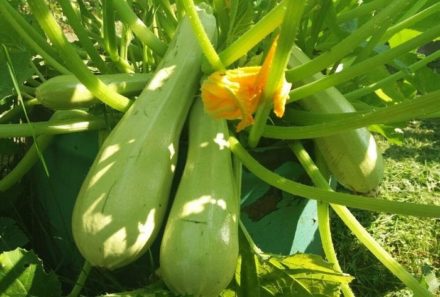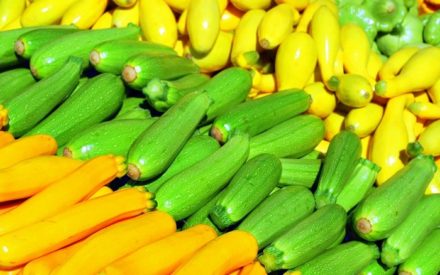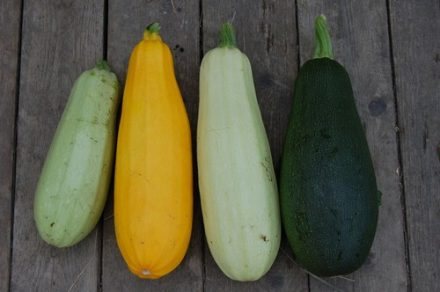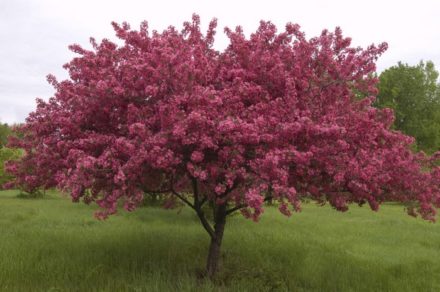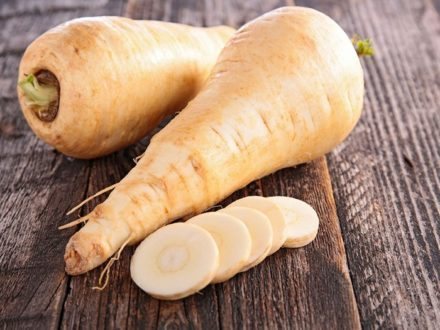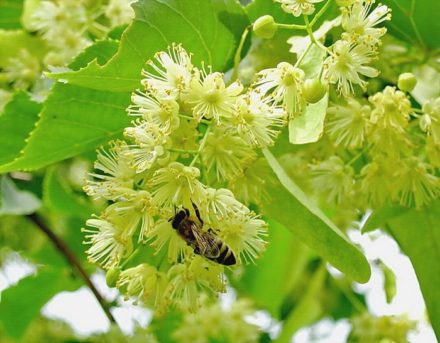Even a novice gardener can grow the most valuable dietary vegetable on his plot - zucchini or zucchini. The names of these two fruits have already become synonymous, but it is not always correct to say so, because there are differences between them. Before preparing these vegetables or choosing them for planting, it is worth getting acquainted with their characteristics.
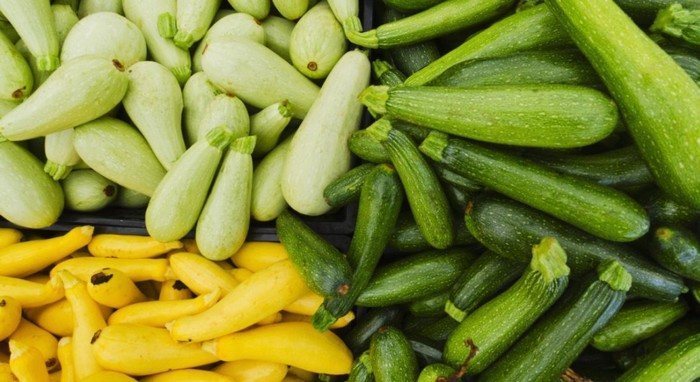
Differences and similarities in appearance
Both vegetables belong to the pumpkin family. Zucchini is the Italian brother of zucchini, its hybrid. He appeared in our area later. Today, housewives prefer zucchini for preparing delicate dishes. Zucchini was first brought from Mexico, where residents used only its seeds for food. They came to Europe in the 16th century and played a decorative role. Only two centuries later they began to prepare various dishes.
Zucchini is characterized by a light green color of the peel, slightly whitish. Zucchini color is dark green, yellow or striped. Sometimes speckled specimens are found.
The zucchini skin is tougher and thicker; it must be cut off before cooking. The zucchini skin is soft and tender, allowing it to be cooked without peeling. Zucchini reaches large sizes both in length and width. The zucchini fruit, on the contrary, is long and thin. The inside of the squash is filled with large seeds that must be removed before cooking.And its Italian hybrid has completely invisible seeds, they do not need to be removed.
The squash bush is large, spreading, forms long shoots. It is characterized by small foliage and flowers. Zucchini has a compact bush, large leaves of a rich green color. If you properly care for the squash, the fruit can grow up to 40 cm in length, and zucchini - only up to 25 cm.
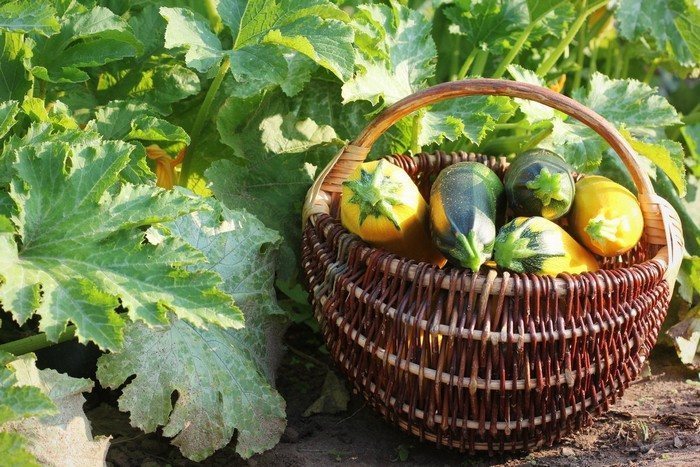
Specifics of squash
Squash is a creeping plant that forms a large bush. It has long shoots. The plant tolerates temperature changes well, and weeds rarely grow under its abundant foliage. The fruits can be picked until the first frost.
The vegetable cannot be eaten raw because of the hard skin. Large seeds fill out in ripe fruits. Up to 10 fruits can form on one bush. Ripening depends on the time of planting. Most often, it occurs in mid-August - early September.
Vegetables that are not harvested in time lose their taste, reach enormous sizes, harden and dry out. The plant itself regulates its fruiting: the bush forms as many fruits as it can feed. The bushes are unpretentious in care, and are not afraid of temperature changes.
In order for the zucchini plant to develop well, it needs a large space for growth, because the bush is formed spreading. Sometimes the crop is attacked by insect pests, so they must be dealt with.
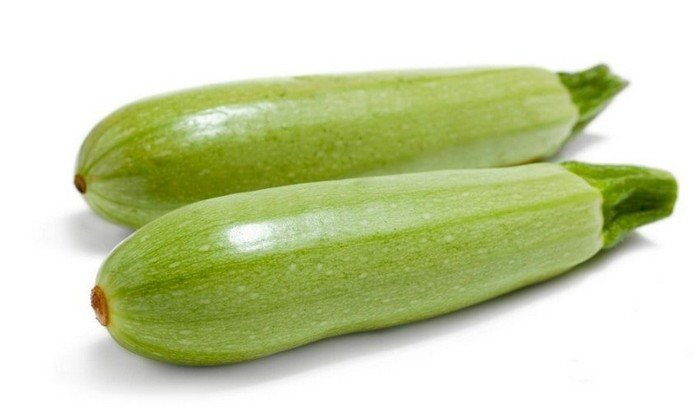
The peculiarity of zucchini
Zucchini was bred by crossing pumpkin and squash. Italian breeders were the first to do this. The plant is distinguished by a miniature bush, more whimsical in cultivation than squash. It needs more moisture and sun, needs frequent loosening and weed removal.Zucchini ripening occurs earlier, the fruits are picked already in mid-summer.
The bush is simply covered with germs; from 15 to 20 fruits can grow on it. The bush bears fruit all summer. The vegetable is distinguished by its tender pulp with a minimal amount of seeds. Even minor frosts can lead to the death of the bush.
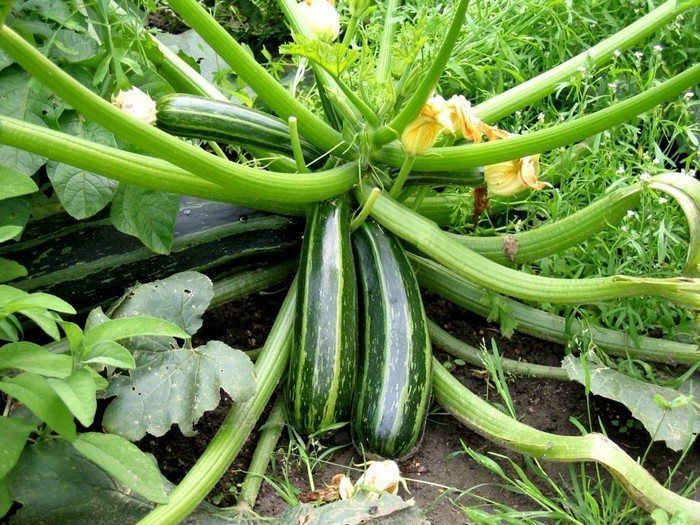
Features of cultivation
To get a rich harvest of zucchini, the plant needs to be planted in an open sunny area, while zucchini will feel better in partial shade. Zucchini sprout much faster, but over the entire growing season their Italian relatives catch up and surpass them.
For zucchini, you need to prepare high, fertile beds in the fall. In spring, it is better to lightly sprinkle the seedlings with sand or soil to keep the young plants warmer. To obtain an early harvest, you can use the seedling method. Zucchini is not so picky, so it is suitable for sowing directly into the ground. There is no need to cover them.
Squash bushes should be watered 3-4 times a week when fruits form. Zucchini prefers moister soil. Zucchini is easier to care for, but zucchini is more finicky. But they mature faster. Both plants can be fed with organic and mineral fertilizers.
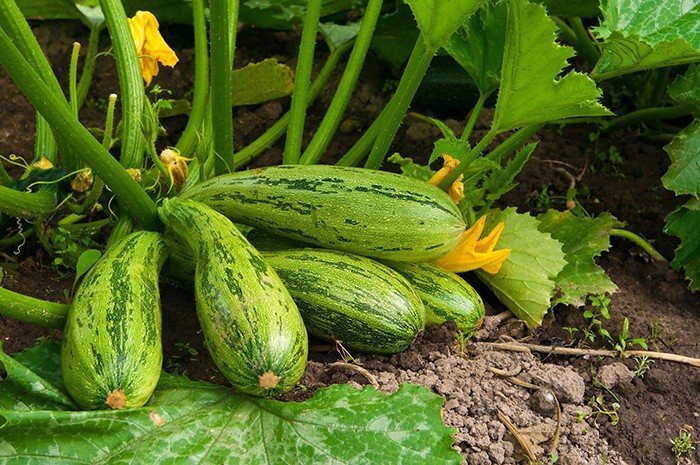
What to choose for planting
Zucchini is more unpretentious to grow. There is very little hassle with them. They grow well in the garden and in the greenhouse. In the middle zone they are sown directly into the ground in mid-May. The bushes have a branched root system that easily adapts to drought. You cannot sow zucchini in the place where cucumbers, squash, and pumpkins used to grow.They will be best served after potatoes, tomatoes, peas, garlic, and onions. This plant loves loose, fertile soil in a sunny, windless place. Manured soil is ideal. Vegetable crops require timely weeding, loosening the soil, watering, fertilizing and picking fruits.
Loose sandy loam soil is more suitable for zucchini. The vegetable grows best from seedlings. Seeds should be sown in early April, and seedlings should be planted in mid-May. The plant needs more water, so you need to water the zucchini more often. During the period of fruit formation, you can feed the bushes with phosphorus-potassium fertilizers or mullein.
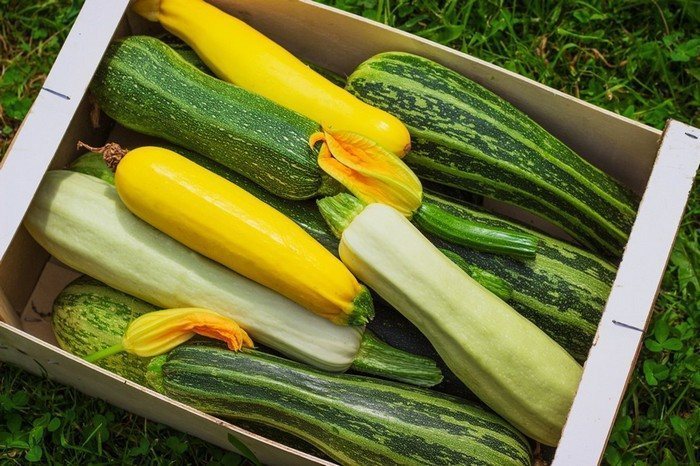
There are small differences between the two crops, but both deserve pride of place in the garden. Zucchini is easier to care for and grow, while zucchini is famous for its delicate thin skin and pulp.


